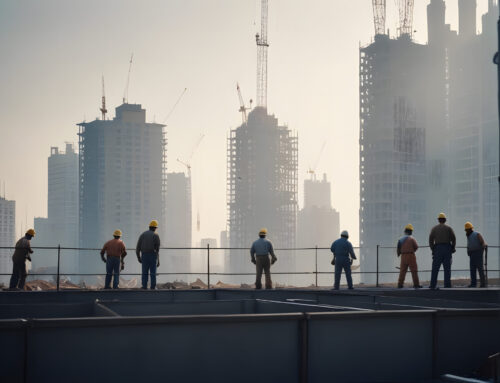In the construction industry, safety is not just a priority—it’s a necessity. A safety-first culture is vital for protecting workers, reducing accidents, and ensuring project success. The foundation of this culture starts with recruitment. By focusing on safety during the hiring process, construction companies can build teams that prioritize safety on every job site. This blog post explores key recruitment strategies to foster a safety-first culture in your organization.
The Importance of a Safety-First Culture
A safety-first culture in construction goes beyond compliance with regulations; it is about creating an environment where every team member is committed to preventing accidents and maintaining a safe work environment. When safety is ingrained in the culture, workers are more likely to adhere to safety protocols, report hazards, and take proactive steps to avoid risks. This not only protects employees but also improves project outcomes by reducing delays, avoiding costly accidents, and enhancing overall productivity.
Recruitment Strategies for Building a Safety-First Culture
1. Emphasize Safety in Job Descriptions
The first step in attracting safety-conscious candidates is emphasizing safety in your job descriptions. Clearly outline your company’s commitment to safety, the importance of adhering to safety protocols, and your expectations for all employees regarding safety.
Example: “Join our team of safety-first professionals committed to maintaining the highest standards of safety on every job site. We prioritize the well-being of our workers and expect all team members to uphold our safety protocols rigorously.”
2. Screen for Safety Awareness
During the interview process, assess candidates’ safety awareness and experience with safety protocols. Ask specific questions about their approach to safety, how they handle hazardous situations, and their experience with safety training programs. Look for candidates who demonstrate a strong commitment to safety and a track record of working safely.
Sample Interview Question: “Can you describe a time when you identified a potential safety hazard on a job site? How did you address it, and what was the outcome?”
3. Prioritize Safety Certifications and Training
Consider giving preference to candidates who have relevant safety certifications, such as OSHA (Occupational Safety and Health Administration) certifications. These certifications indicate that the candidate has received formal training in safety protocols and understands the importance of maintaining a safe work environment.
Example: “Candidates with OSHA 30-Hour Construction Certification are highly preferred, as this demonstrates a comprehensive understanding of safety standards and best practices.”
4. Incorporate Safety Assessments in the Hiring Process
Integrate safety assessments into the recruitment process to evaluate candidates’ practical knowledge of safety protocols. This could include written tests, scenario-based questions, or even on-site assessments where candidates demonstrate their ability to identify and mitigate risks.
Example: “As part of our hiring process, we conduct a safety assessment to ensure that all potential hires have a strong understanding of our safety protocols and can apply them effectively in real-world situations.”
5. Onboard with a Focus on Safety
Your commitment to a safety-first culture should be evident from day one. Incorporate safety training into your onboarding process, ensuring that new hires understand your company’s safety policies, procedures, and expectations. Reinforce the importance of safety by providing ongoing training and resources to keep safety top-of-mind for all employees.
Example: “Our onboarding program includes comprehensive safety training, covering everything from hazard identification to emergency procedures, ensuring that all new hires are well-equipped to work safely from day one.”
6. Foster a Culture of Accountability
Encourage a culture where every team member feels responsible for safety. This can be achieved by promoting open communication, encouraging employees to report safety concerns without fear of retaliation, and recognizing those who contribute to maintaining a safe work environment.
Example: “We believe that safety is everyone’s responsibility. Our open-door policy encourages all employees to voice concerns and share suggestions for improving workplace safety.”
Creating a safety-first culture in construction starts with recruiting the right people—those who value safety as much as you do. By emphasizing safety in job descriptions, screening for safety awareness, prioritizing safety certifications, incorporating safety assessments, and focusing on safety during onboarding, construction companies can build teams that prioritize safety on every job site. This approach not only protects your workforce but also contributes to the success and reputation of your company. Investing in safety is investing in your company’s future.









